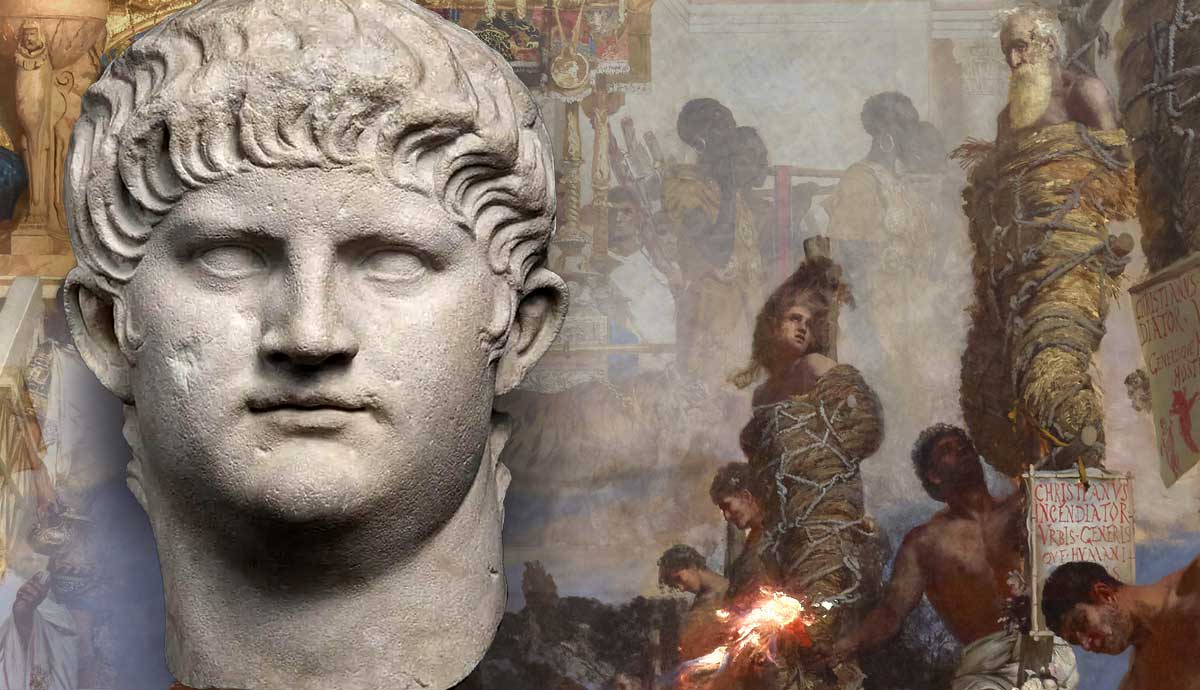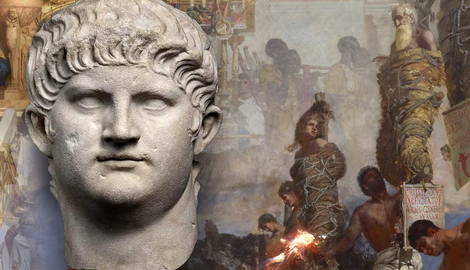
One of emperor Nero’s most infamous acts was his Persecution of Christians. If we are to believe the sources, this was the first empire-wide attempt to suppress Christianity, which was still a young religious sect in the mid-first century. Yet, in the eyes of the Roman authorities, Christianity threatened the established order and the pagan pantheon. In addition, Nero had to appease the victims of the Great Fire of Rome, and the problematic Christians were excellent scapegoats.
Thus, the Christians were subjected to cruel and humiliating punishments, ranging from being burned alive to crucifixion. Nero also reportedly executed the most prominent Christian leaders, Peter and Paul. However, modern historians are questioning the extent of the Persecution, as the early Christian writers exploited the event to glorify the martyrs and vilify Nero’s name, turning this average autocrat into nothing less than the Antichrist.
Emperor Nero Blamed Christians for the Great Fire of Rome

One of the most tragic events in Nero’s controversial reign was the Great Fire of Rome, which erupted in July 64 CE. The fire raged for six days, devastating the capital and leaving most of the populace homeless. Nero did his best to help the victims and enforced strict fire and building regulations to prevent further disasters. However, the emperor’s enemies, including the Senate of Rome, jumped on the opportunity to blame Nero for igniting the fire, or at least allowing the city to burn, to make room for his grandiose building projects. Nero also faced public anger as he started to build his lavish palace – Domus Aurea – while the ashes were still hot.
The solution was a small but rapidly growing religious sect following the teachings of one rebel from Judea, whom his followers called Christ. As the Christians did not recognize the traditional Roman pantheon and disrespected the Roman authorities, they were an ideal scapegoat.
Nero Started Persecution of the Christians in Rome

If we are to believe Tacitus, our primary source, Nero used the Great Fire of Rome to launch a violent persecution of Christians, a sect already unpopular and mistrusted by many Romans. The authorities arrested the suspects and tortured them in the worst ways possible. The people loved extravagant spectacles, such as chariot races or gladiator fights. Thus, Nero decided to make Christians a form of entertainment to appease the masses. The Christians were thrown to the beasts in the grand amphitheater or burned alive as human torches. He also ordered the Christians to be crucified so they could emulate their savior, Jesus Christ. Crucifixion was usually reserved for the worst criminals. Thus, Nero used the Christians to bolster his authority as the Roman emperor. Persecution created an atmosphere of terror, forcing Christians into the shadows causing them to practice their faith discreetly, deep in the catacombs of the capital.
Saint Peter and Paul Died in the Persecution

Among the many victims of Persecution were two of the most influential figures in the early Christian church: Saint Peter and Paul. Both were apostles of Jesus Christ, who travelled across the Roman Empire after his death, preaching and spreading the gospel. According to the New Testament, Peter was crucified upside down at his own request as he was unworthy to die in the same way as his Lord. As a Roman citizen, Paul had the right to a less painful death and was beheaded.
After Christianity became the official religion of the Empire under Theodosius, the bishop of Rome used Saint Peter’s martyrdom to establish himself as one of the leading figures in Christendom – the Pope.
Christianity Threatened the Emperor’s Authority

Both of our main sources for Persecution, Tacitus and Suetonius, shared the opinion that to the Roman authorities, Christianity was a threat to the established order and authority of the emperor. As a monotheistic religion, Christianity clashed with the polytheistic and syncretic Roman religion, which tolerated and incorporated many diverse gods and cults. Even worse, Christianity refused to participate in the imperial cult, which worshipped the emperor as a god and a protector of the Roman Empire.
In Nero’s eyes, Christianity’s exclusivity and rejection of the traditional pantheon offended the Roman gods, thus endangering the divine favor and prosperity of his empire.
Nero’s Persecution Was a Turning Point for Christianity

Unfortunately, the contemporary sources for Nero’s Persecutions are non-existent. Both Tacitus and Suetonius lived decades after Nero’s death. The next important author – Tertullian – lived in the third century, while most detailed reports, including the account of St. Peter and Paul’s martyrdom, came from the fourth century – when the Roman Empire was leaving behind its pagan past and embracing Christianity. In these turbulent times, during the reign of Constantine the Great, the now official religion had to create its own identity. And Nero, a reviled pagan emperor, was an excellent target.
In addition, Christian authors, such as Eusebius, could inflate the extent of Nero’s persecution, and those that followed, such as persecutions under Emperor Diocletian, to bolster the position of Constantine and his new Constantinian dynasty.
Emperor Nero Became the Antichrist

The martyrdom of Peter and Paul elevated their status within the Christian community, transforming them into revered figures and making Rome one of the leading centers of Christianity. It also shaped Christian belief. The faithful now looked forward to the resurrection of the dead and the heavenly reward bestowed by the martyrs, who would reign with Christ in the new Jerusalem. The Persecutions that followed only strengthened the belief that the end times were near and that the Final Judgment was imminent. Many identified Nero with no one less than the Antichrist, the beast, or the dragon featured in the Book of Revelation, written shortly after his reign.
In the end, Nero’s Persecution, whatever its extent, greatly contributed to the development of Christian theology and strengthened the resolve of the early Christian community, becoming the turning point for Christianity and giving Nero the unflattering role of the Antichrist.










